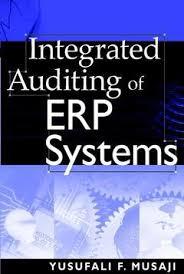






May 1 Beginning merchandise inventory May 11 Purchase May 23 Sale May 26 Purchase May 29 Sale 22 tires @ $53 each 14 tires @ $71 each 18 tires @ $78 each 10 tires @ $74 each 19 tires @ $78 each Assume that Steelrubber Tire Store completed the following perpetual inventory transactions for a line of tires: (Click the icon to view the transactions.) Read the requirements. Requirement 1. Compute cost of goods sold and gross profit using the FIFO inventory costing method. Begin by computing the cost of goods sold and cost of ending merchandise inventory using the FIFO inventory costing method. Enter the transactions in chronological order, calculating new inventory on hand balances after each transaction. Once all of the transactions have been entered into the perpetual record, calculate the quantity and total cost of merchandise inventory purchased, sold, and on hand at the end of the period. (Enter the oldest inventory layers first.) Purchases Cost of Goods Sold Inventory on Hand Unit Total Unit Total Unit Total Date Quantity Cost Cost Quantity Cost Cost Quantity Cost Cost May 1 11 231 261 29 Compute gross profit using the FIFO inventory costing method. Gross profit is using the FIFO inventory costing method. Requirement 2. Compute cost of goods sold and gross profit using the LIFO inventory costing method. Begin by computing the cost of goods sold and cost of ending merchandise inventory using the LIFO inventory costing method. Enter the transactions in chronological order, calculating new inventory on hand balances after each transaction. Once all of the transactions have been entered into the perpetual record, calculate the quantity and total cost of merchandise inventory purchased, sold, and on hand at the end of the period. (Enter the oldest inventory layers first.) Purchases Cost of Goods Sold Unit Total Unit Total Inventory on Hand Unit Total Quantity Cost Cost Date Quantity Cost Cost Quantity Cost Cost May 1 111 23 26 29 Totals Compute gross profit using the LIFO inventory costing method. Gross profit is using the LIFO inventory costing method. Requirement 3. Compute cost of goods sold and gross profit using the weighted average inventory costing method. (Round weighted average cost per unit to the nearest cent and all other amounts to the nearest dollar.) Begin by computing the cost of goods sold and cost of ending merchandise inventory using the weighted average inventory costing method. Enter the transactions in chronological order, calculating new inventory on hand balances after each transaction. Once all of the transactions have been entered into the perpetual record, calculate the quantity and total cost of merchandise inventory purchased, sold, and on hand at the end of the period. Purchases Cost of Goods Sold Inventory on Hand Unit Total Unit Total Unit Total Date Quantity Cost Cost Quantity Cost Cost Quantity Cost Cost May 1 111 23 26 291 Totals Compute gross profit using the weighted average inventory costing method. Gross profit is using the weighted average inventory costing method. Requirement 4. Which method results in the largest gross profit, and why? method results in the largest gross profit because during times of inventory prices, this method will produce the cost The of goods sold













